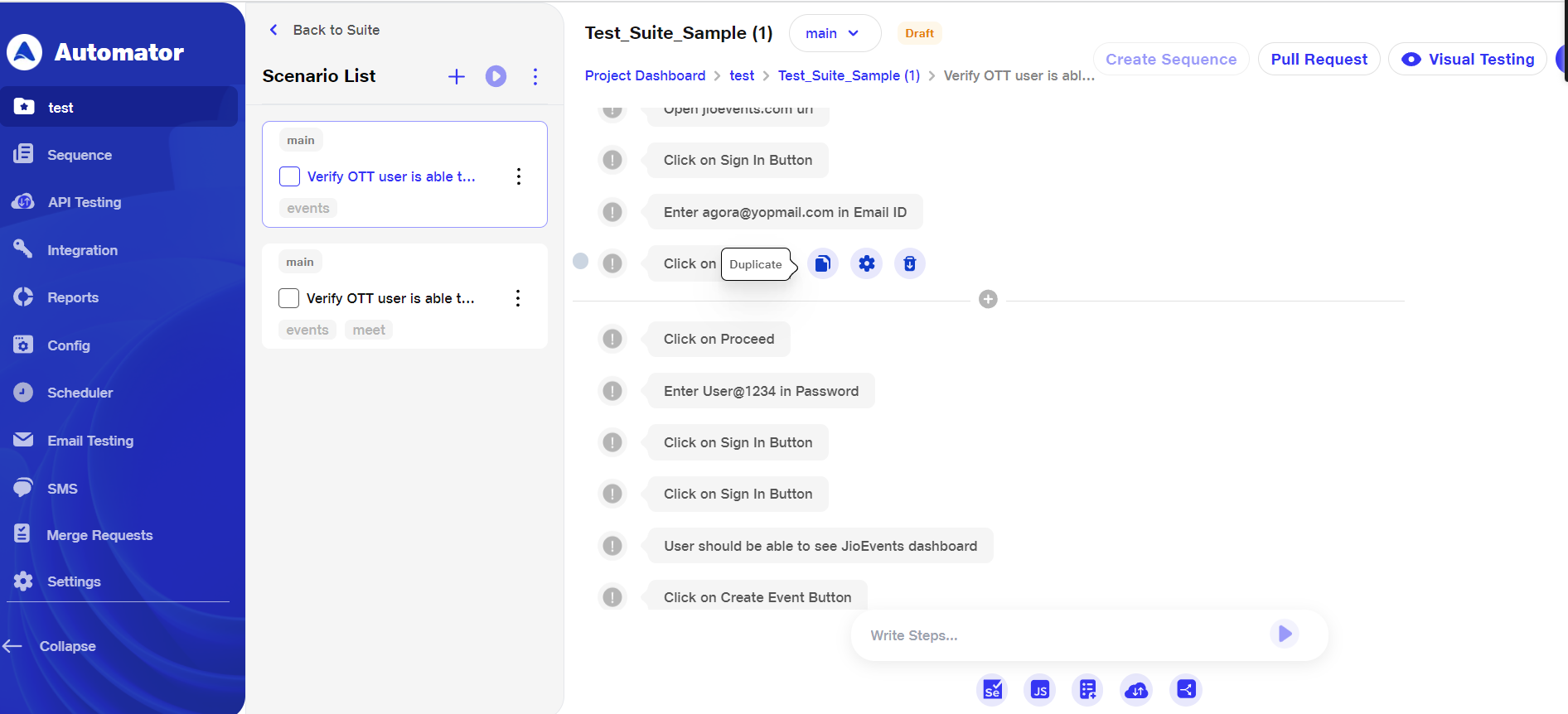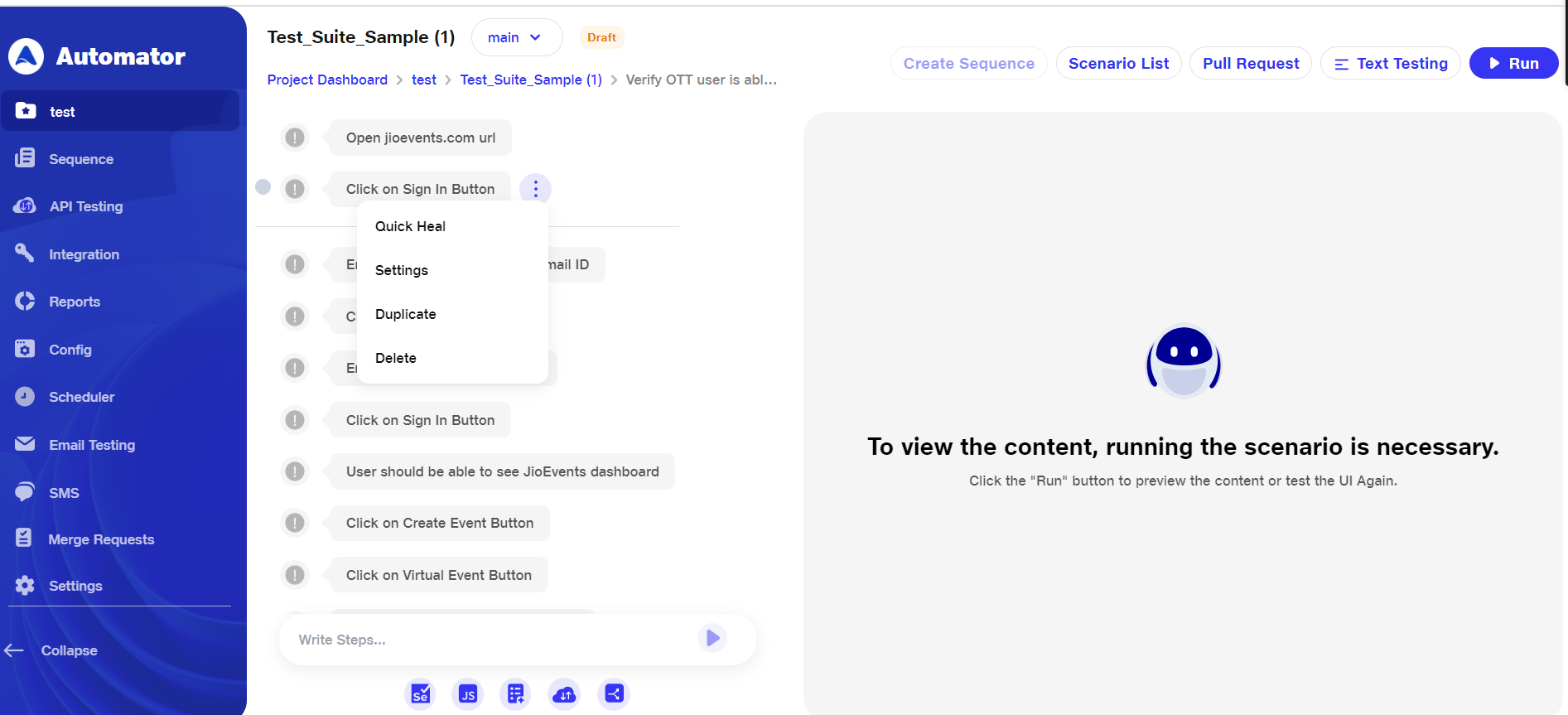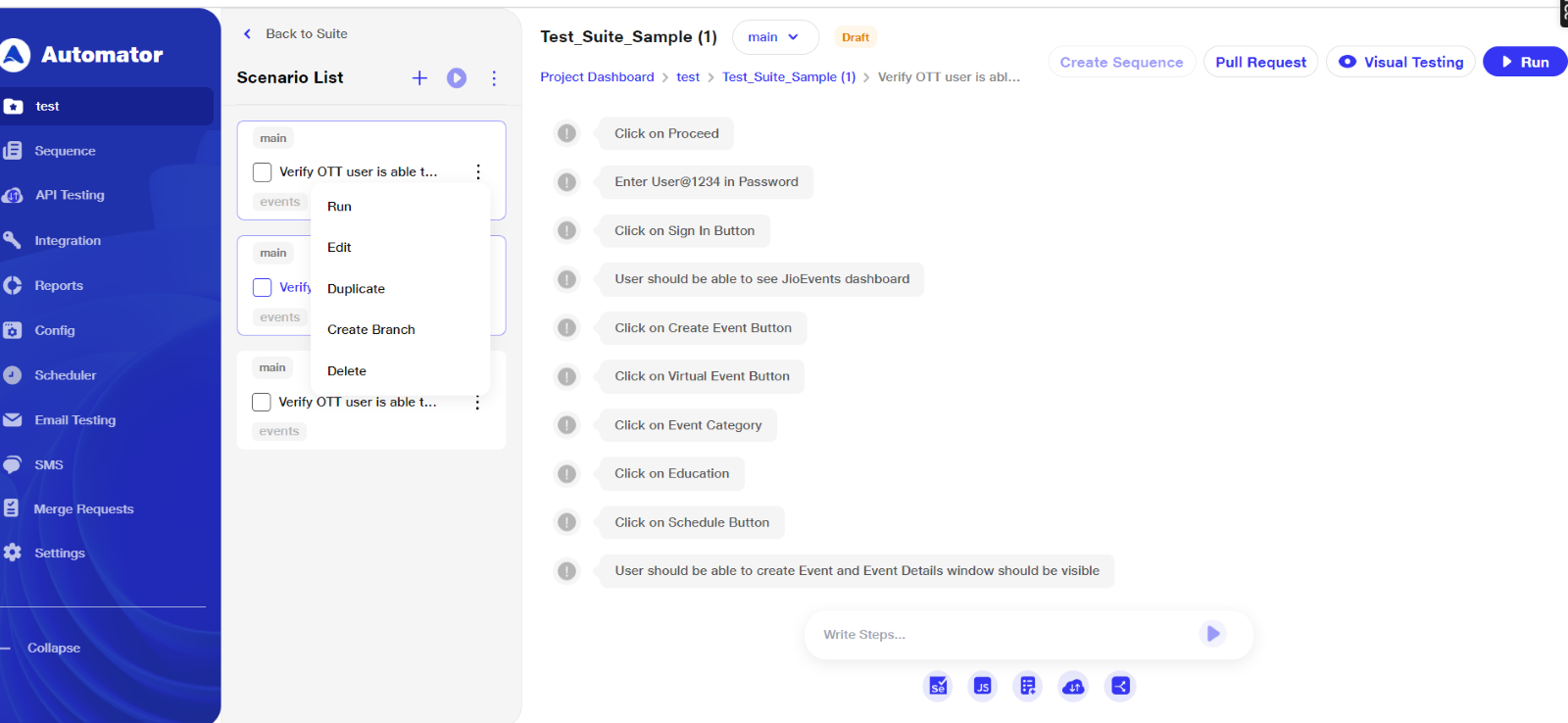Duplication of Step/scenario:
The Duplicate Step/Scenario feature in our Automator tool allows users to swiftly replicate existing steps or entire scenarios with ease and efficiency, enhancing productivity and streamlining workflow creation.
Steps Duplication:
-
Effortless Duplication: Users can duplicate individual steps within a scenario by two ways :
i. By hovering over the step and clicking the duplicate icon (text testing).

ii. By selecting the duplicate option from the 3-dot menu (visual testing).

-
Step Types Supported: Includes JavaScript, Selenium, Call API, and sequence steps.
-
Organized Structure: Duplicated steps appear just below the original, maintaining clear organization.
-
Execution Rules: The first step cannot be duplicated. Duplicating the last step triggers auto-execution if previous steps are executed; duplicating intermediate steps requires re-running the scenario.
Scenario Duplication:
- Single Click Duplication: Entire scenarios can be duplicated from the text testing section, by accessing the 3-dot menu and selecting the duplicate option.

-
Test Dataset Mapping: Duplicated scenarios retain the original test dataset, ensuring consistency.
-
Retention of Settings: All original settings, configurations, and parameters are retained in duplicated steps and scenarios which can be modified to fit specific needs
Benefits:
Enhanced Productivity: Minimizes repetitive tasks and accelerates workflow creation ,saving time and effort.
Consistency and Accuracy: Ensures consistency and accuracy across duplicates, reducing the need for reconfiguration.
Enhanced Efficiency : Enables users to prototype, iterate, and refine automation sequences rapidly.
Reliability: Reduces human error associated with manual repetition, enhancing workflow robustness.
Flexibility for Exploration: Easily experiment with various iterations of automation sequences and maintain a library of reusable scenarios.